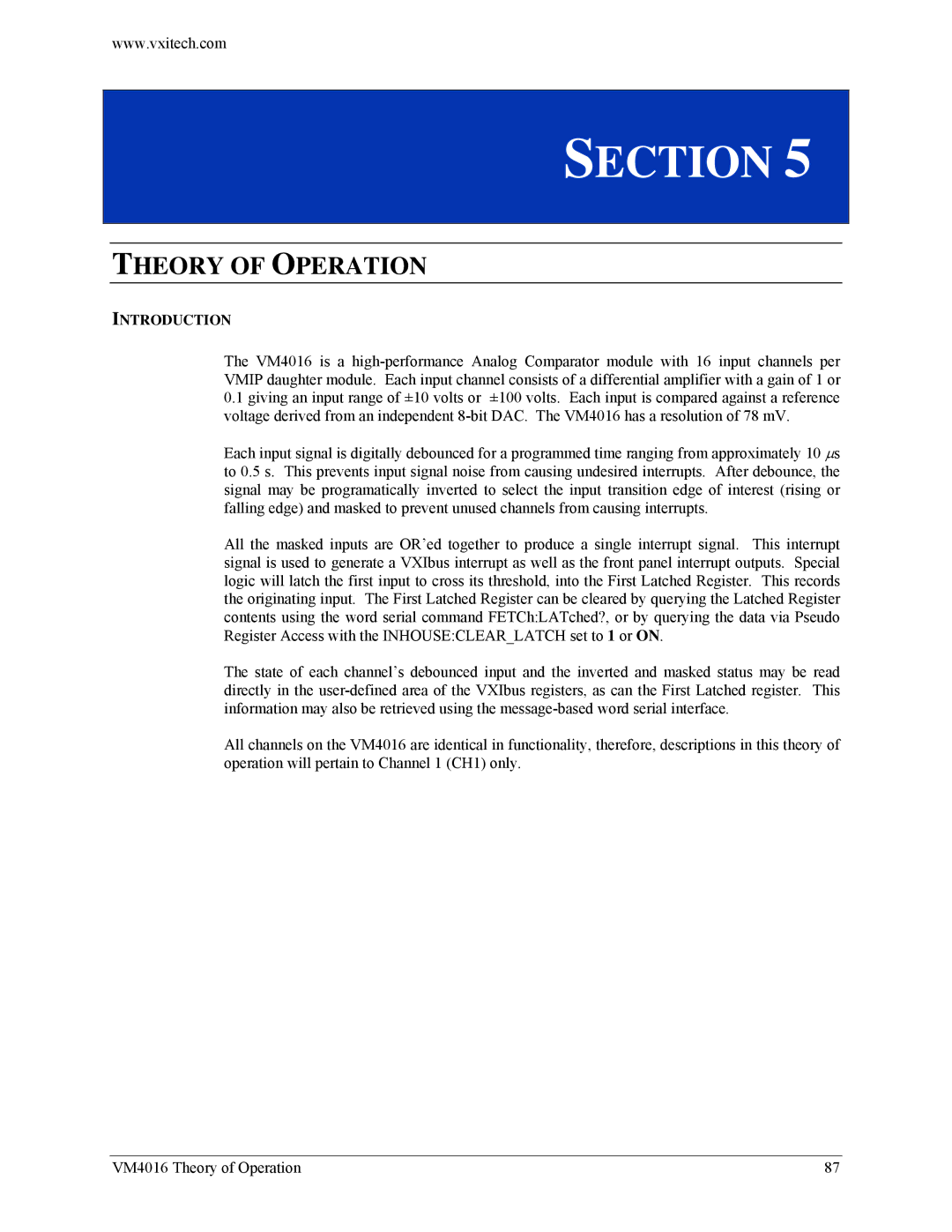
www.vxitech.com
SECTION 5
THEORY OF OPERATION
INTRODUCTION
The VM4016 is a
0.1giving an input range of ±10 volts or ±100 volts. Each input is compared against a reference voltage derived from an independent
Each input signal is digitally debounced for a programmed time ranging from approximately 10 ∝s to 0.5 s. This prevents input signal noise from causing undesired interrupts. After debounce, the signal may be programatically inverted to select the input transition edge of interest (rising or falling edge) and masked to prevent unused channels from causing interrupts.
All the masked inputs are OR’ed together to produce a single interrupt signal. This interrupt signal is used to generate a VXIbus interrupt as well as the front panel interrupt outputs. Special logic will latch the first input to cross its threshold, into the First Latched Register. This records the originating input. The First Latched Register can be cleared by querying the Latched Register contents using the word serial command FETCh:LATched?, or by querying the data via Pseudo Register Access with the INHOUSE:CLEAR_LATCH set to 1 or ON.
The state of each channel’s debounced input and the inverted and masked status may be read directly in the
All channels on the VM4016 are identical in functionality, therefore, descriptions in this theory of operation will pertain to Channel 1 (CH1) only.
VM4016 Theory of Operation | 87 |
